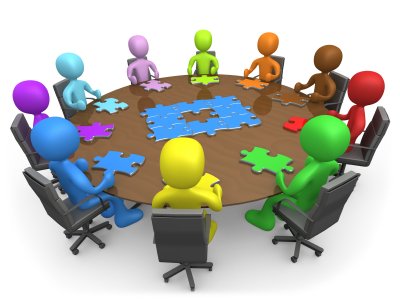Last week, I had the opportunity to engage in a thought-provoking discussion about the widely debated concept of ‘Multistakeholderism‘, a key topic within the Internet Governance community. The session, part of an ongoing program with the Internet Society, featured an open discussion where participants presented both pro and con arguments. The zoom virtual town hall format allowed for dynamic interaction between speakers and the audience, sparking insightful debates supported by facts and evidence on the strengths and challenges of the multistakeholder model.

During the discussion, I began to realize that while the multistakeholder model is often lauded for its emphasis on inclusivity, it does have its drawbacks. At its core, the model advocates for the involvement of a wide range of stakeholders—governments, private sector actors, civil society, technical experts, and others—in decision-making processes related to Internet governance. On the surface, this appears to be a democratic and inclusive approach. However, as the conversation progressed, it became clear that the model is not without its complexities. I’m reflecting on what I’ve learned personally from the discussion.
Why Multistakeholder Model?
The “multistakeholder model” is often portrayed as a single solution, but in reality, it’s not a one-size-fits-all approach. Instead, it’s a flexible framework that enables diverse individuals and organizations to come together, exchange ideas, and build consensus. It’s akin to a well-organized orchestra: while each instrument brings its own sound, they work together to create a harmonious performance. The multistakeholder approach thrives on collaboration, adaptability, and the ability to draw on various areas of expertise to address complex global issues.
For instance, consider the process of designing a public transportation system. A top-down, government-only approach might miss critical insights from local communities, engineers, and environmental experts. In contrast, a multistakeholder approach brings together city planners, citizens, transportation experts, and environmentalists to develop a system that meets the diverse needs of the population. This approach is most effective in situations where decisions affect a broad range of people, require expertise from different fields, and demand legitimacy to ensure successful implementation. Since the 2005 World Summit on the Information Society (WSIS), stakeholders have widely endorsed multistakeholderism as the preferred approach for addressing Internet governance and other complex global challenges.
Critiques of the Multistakeholder Model
The idea of “inclusivity” often implies a balance of power among all stakeholders, but in practice, this balance can be difficult to achieve. The Internet, as a global and decentralized entity, doesn’t belong to any single individual or organization, and no one stakeholder group has full control over its operation or development. However, despite the intention to ensure broad representation, certain groups—especially those with more financial, technical, or political power—can dominate discussions, potentially sidelining less powerful voices. This raises questions about the true level of inclusivity that the model offers, and whether it can truly capture the diverse interests and needs of all who are affected by the Internet, especially marginalized or underrepresented communities.

A key challenge in defining multistakeholderism is that no clear, agreed-upon definition exists for who qualifies as a “stakeholder.” While the concept suggests that anyone with an interest in an issue should have a voice, it doesn’t explain how we select stakeholders or what makes someone legitimately part of the conversation. This lack of clarity leads to different groups using various, sometimes conflicting, definitions of who counts as a stakeholder—despite the fact that the legitimacy of the entire governance process depends on this definition.
For example, in Internet governance, we could consider every user a stakeholder, but how do we actually represent these users? Additionally, one person may be seen as representing multiple identities, such as geographic region, gender, or other aspects, but does that mean they truly represent everyone within those categories? For instance, does the involvement of one woman in a multistakeholder setting truly reflect gender representation? Similarly, does having one civil society representative mean the full complexity of civil society is represented? These questions highlight the complexities and limitations of the multistakeholder model in practice.
In conclusion, while the multistakeholder model is designed to be a collaborative and inclusive framework, its implementation often requires balancing competing interests, addressing power imbalances, and ensuring that all voices are heard and valued equally. This remains a dynamic and ongoing debate that calls for continued dialogue, open forums, and active participation, particularly from younger generations. The future of multistakeholderism depends on our collective ability to engage in these discussions and work towards more inclusive, transparent, and effective governance structures.